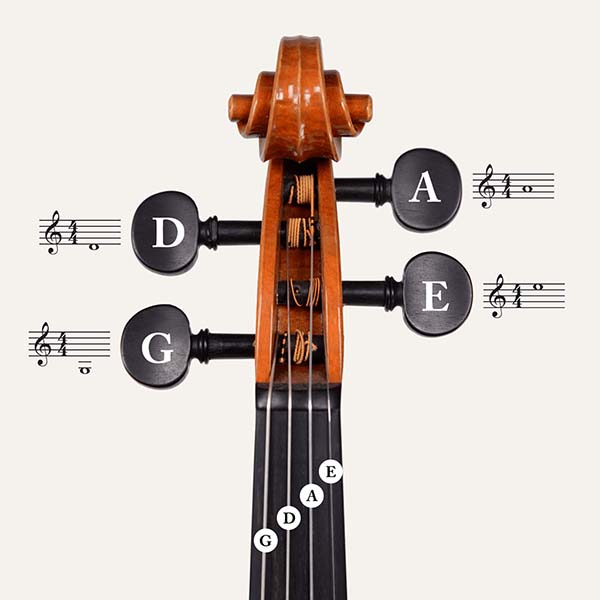What is CTS?
CTS symptoms include numbness and tingling in the hand and arm. It's an indication of squeezing on the median nerve -- a major nerve of the hand -- as it tries to make its way to the wrist. In more acute cases, there is excruciating pain.
You're not alone.
CTS affects three to six percent of all adults in the general population, according to an article on the American Academy of Family Physicians website. It’s more common in women and can appear in one or both wrists.
Typing, lifting, throwing, twisting, bending -- all these repeated motions lead to joint discomfort. It's no wonder, then, both musicians and non-musicians suffer from joint pain at some point in life.
Can I Still Play the Violin with CTS?
A CTS diagnosis may mean slowing down on or stopping practice for some time. Consult your chiropractor or doctor.
Either way, it all depends on the severity, treatment, and healing process.
Severity
Early detection is key. However, some musicians might ignore small twinges of pain or tingling, writing it off as part of the regular process of practice and learning.
Do not ignore tension and pain! It is your body's way of warning you to stop an action which may cause more significant issues in the future.
It's so important to identify tension and give our body the necessary solutions to overcome it. Adjust your posture and technique. Take more breaks. Drink more water. Consume more nutritious meals. See your doctor.
In many cases, especially for professional musicians, Carpal Tunnel Syndrome is often at a more severe point when they finally make an appointment to see their doctor.
After years of ignoring small warnings from the body, it has halted the person's career, and they must now address the issue.
Do not despair! Even at the chronic phase, there are treatments available.
Treatment
Consult your doctor and look into all avenues. There are quite a few to choose from.
Rehabilitation. Sports rehab facilities specialize in therapeutic exercises to reduce or eradicate pain in the arms, hands, legs, back and other parts of the body. They see athletes with these types of injuries on a daily basis. Research facilities near you and consult a sports medicine doctor.
Chiropractic Treatment. Typically, chiropractic care for CTS includes upper spinal alignment adjustment; they may also directly address the hands and wrist. Find a chiropractor near you to discuss the next step.
Alexander Technique. Alexander Technique teaches people how to eliminate physical movements that lead to pain or injury. Incorporating this ideology into your everyday life may produce surprising results. Talk to an Alexander Technique expert near you.
Acupuncture. Acupuncture is a method of inserting thin needles on to some regions of the body to relieve pressure and pain. It is a crucial component of traditional Chinese medicine. Discuss your options with an acupuncturist in your area.
ELDOA Method. The ELDOA Method are exercises -- stretches -- taught to reduce and prevent inflammatory joint issues. You can only take these classes in Los Angeles and New Zealand.
Surgery. Endoscopic carpal tunnel release surgery is the full name. Your surgeons objective is to cut the transverse carpal ligament, releasing the pressure on the median nerve. When successful, the operation rids the patient of carpal tunnel syndrome symptoms.
Healing
Whatever treatment option you choose, your body needs time to rest and recover.
Of course, it's hard to think of spending any amount of time away from our instruments, but it's necessary for the long run.
It may take several months to heal. Getting back to playing is a slow process. Do not practice five hours or take on a demanding gig on your first day back! Take it one step at a time.
After recovering, adopt a preventative lifestyle. Continue your stretches, do not ignore tension and pain. Adjust accordingly.
Do not let a diagnosis of Carpal Tunnel Syndrome send you into a panic. Consult with your doctor, explore the treatment options, and take the necessary time to restore yourself back to health.








2 comments
Asa Holstein
Hi Ruth and thank you!
Yes, there is hope for fiddlers with Carpal Tunnel Syndrome, great to know for all of us.
Have you visited our free learning site www.fiddlerman.com, by the way? There you can find free lessons, sheet music and even talk to other fiddlers.
All the best to you!
Hi Ruth and thank you!
Yes, there is hope for fiddlers with Carpal Tunnel Syndrome, great to know for all of us.
Have you visited our free learning site www.fiddlerman.com, by the way? There you can find free lessons, sheet music and even talk to other fiddlers.
All the best to you!
Ruth Gortner Grierson
Your message was clear, hopeful and helpful THANKS.
Ruth —91 years old violinist/fiddler
Your message was clear, hopeful and helpful THANKS.
Ruth —91 years old violinist/fiddler